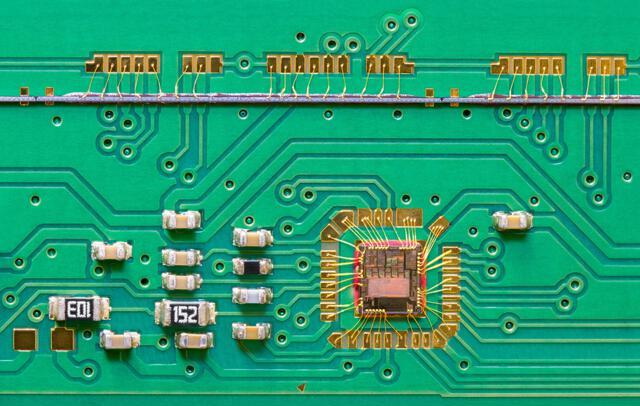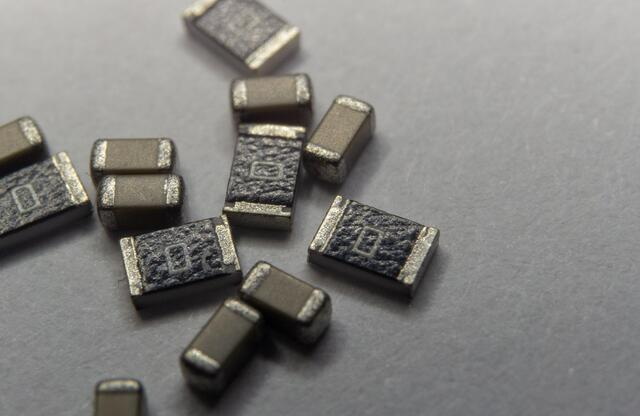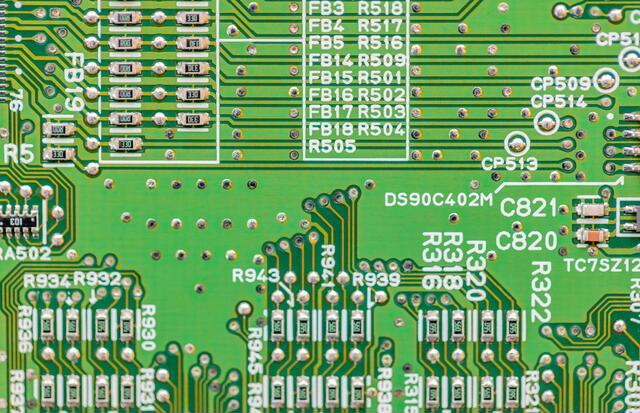Content Menu
● Understanding SMT Machines
>> Key Components of SMT Machines
● What Are SMT Machine Wheels?
>> Characteristics of SMT Machine Wheels
● Importance of SMT Machine Wheels in PCB Assembly
>> 1. Efficiency in Production
>> 2. Accuracy in Component Placement
>> 3. Reduction of Mechanical Stress
>> 4. Support for High-Speed Operations
>> 5. Maintenance and Longevity
● Types of SMT Machine Wheels
● The Role of Technology in Enhancing SMT Machine Wheel Performance
>> Smart Sensors
>> Advanced Materials
>> Customization Options
● Challenges Faced by Manufacturers Regarding SMT Machine Wheels
>> Wear and Tear
>> Cost Considerations
>> Compatibility Issues
● Best Practices for Maintaining SMT Machine Wheels
● Conclusion
● FAQ
>> 1. What materials are commonly used for SMT machine wheels?
>> 2. How do SMT machine wheels affect production efficiency?
>> 3. Can SMT machine wheels prevent static damage?
>> 4. What maintenance is required for SMT machine wheels?
>> 5. How do I choose the right type of SMT wheel for my application?
Surface Mount Technology (SMT) has revolutionized the electronics manufacturing industry, enabling the efficient assembly of printed circuit boards (PCBs). Among the various components that facilitate this process, SMT machine wheels play a crucial role. This article delves into what SMT machine wheels are, their significance in PCB assembly, and the benefits they offer to manufacturers.

Understanding SMT Machines
SMT machines are specialized equipment used to assemble electronic components onto PCBs. Unlike traditional through-hole technology, which requires components to be inserted into holes drilled in the board, SMT allows components to be mounted directly onto the surface of the PCB. This method enhances production efficiency and enables the creation of smaller, more compact electronic devices.
Key Components of SMT Machines
- Pick-and-Place Mechanism: This is the heart of SMT machines, where robotic arms pick up components from feeders and place them onto the PCB with high precision.
- Solder Paste Applicator: Before components are placed, solder paste is applied to designated pads on the PCB to ensure a strong electrical connection once soldered.
- Reflow Oven: After component placement, PCBs pass through a reflow oven where heat melts the solder paste, securing components in place.
- Conveyor System: This system transports PCBs through various stages of assembly. It is here that SMT machine wheels come into play.
What Are SMT Machine Wheels?
SMT machine wheels are specialized wheels used in the conveyor systems of SMT machines. They are designed to facilitate the smooth movement of PCBs through different stages of assembly. These wheels must meet specific criteria to ensure optimal performance in high-speed environments.
Characteristics of SMT Machine Wheels
- Material Composition: Typically made from durable materials such as polyurethane or rubber, SMT wheels are designed to withstand wear and tear while providing excellent traction.
- Design Features: Many SMT wheels incorporate features such as anti-static properties to prevent electrostatic discharge (ESD) that could damage sensitive electronic components.
- Size and Configuration: The size and configuration of SMT wheels can vary depending on the specific requirements of the SMT machine and the type of PCBs being processed.
Importance of SMT Machine Wheels in PCB Assembly
SMT machine wheels are essential for several reasons:
1. Efficiency in Production
The primary function of SMT machine wheels is to ensure that PCBs move smoothly and consistently through the assembly line. Efficient movement reduces downtime and increases overall production speed. A well-functioning conveyor system minimizes delays during component placement and soldering processes, leading to higher throughput rates.
2. Accuracy in Component Placement
Accurate placement of components is critical for ensuring the quality of assembled PCBs. Any misalignment can result in defective products. High-quality SMT machine wheels help maintain proper alignment and orientation as PCBs travel through different stages of assembly, thus enhancing placement accuracy.
3. Reduction of Mechanical Stress
SMT machine wheels help distribute mechanical stress evenly across the PCB as it moves through the assembly process. This is particularly important for preventing warpage or damage that could occur if a PCB is subjected to uneven pressure during transport.
4. Support for High-Speed Operations
Modern electronics manufacturing often involves high-speed operations where thousands of components are placed per hour. SMT machine wheels designed for high-speed applications ensure that PCBs can keep pace with these demands without compromising quality or safety.
5. Maintenance and Longevity
Using durable materials and designs that resist wear ensures that SMT machine wheels have a long operational life. Regular maintenance can further extend their lifespan, reducing costs associated with replacements and downtime due to wheel failures.
Types of SMT Machine Wheels
Understanding the different types of SMT machine wheels can help manufacturers choose the right ones for their specific needs:
- Standard Polyurethane Wheels: Commonly used for general applications due to their durability and resistance to wear.
- ESD Wheels: Designed specifically for environments where static electricity could pose a risk to electronic components.
- Heavy-Duty Wheels: Built to support heavier loads or high-speed operations, these wheels provide enhanced stability and support.

The Role of Technology in Enhancing SMT Machine Wheel Performance
As technology advances, so too does the design and functionality of SMT machine wheels. Manufacturers are increasingly incorporating innovative features into wheel design to improve performance:
Smart Sensors
Some modern SMT machines are equipped with smart sensors that monitor wheel performance in real-time. These sensors can detect issues such as wear or misalignment before they lead to significant problems, allowing for proactive maintenance and minimizing downtime.
Advanced Materials
The development of new materials has led to improvements in wheel durability and performance. For example, some manufacturers are experimenting with composite materials that offer better resistance to abrasion while maintaining lightweight properties.
Customization Options
Manufacturers now have access to customizable wheel solutions tailored specifically to their production needs. This includes options for size, tread pattern, and material composition based on specific operational requirements or environmental conditions.
Challenges Faced by Manufacturers Regarding SMT Machine Wheels
While SMT machine wheels offer numerous advantages, manufacturers also face challenges related to their use:
Wear and Tear
Despite their durability, SMT machine wheels experience wear over time due to constant friction against PCBs and other surfaces. Regular monitoring is essential to ensure they remain effective throughout their operational lifespan.
Cost Considerations
High-quality SMT machine wheels can represent a significant investment for manufacturers. Balancing cost with performance is crucial; opting for cheaper alternatives may lead to increased maintenance costs down the line if they do not perform adequately.
Compatibility Issues
Not all SMT machine wheels are compatible with every type of equipment or PCB design. Manufacturers must ensure they select wheels that match their specific machinery requirements while also considering future scalability as production needs evolve.
Best Practices for Maintaining SMT Machine Wheels
To maximize the lifespan and performance of SMT machine wheels, manufacturers should adopt best practices for maintenance:
1. Regular Inspections: Conduct routine checks on wheel condition, looking for signs of wear or damage that could affect performance.
2. Cleaning Procedures: Keep wheels clean from dust or debris that may accumulate over time; this helps maintain optimal traction and reduces wear on both wheels and PCBs.
3. Lubrication: Some wheel designs may benefit from periodic lubrication; consult manufacturer guidelines regarding appropriate lubricants if applicable.
4. Replacement Schedule: Establish a replacement schedule based on usage patterns; proactive replacement can prevent unexpected downtimes caused by wheel failure.
5. Training Personnel: Ensure staff members are trained on proper handling techniques during maintenance procedures; this helps avoid accidental damage during inspections or replacements.
Conclusion
In summary, SMT machine wheels are integral components of modern PCB assembly processes. Their ability to facilitate efficient movement, maintain alignment, reduce mechanical stress, support high-speed operations, and ensure longevity makes them essential for manufacturers aiming for high-quality production standards. As technology continues to evolve, so will the designs and functionalities of these critical components, further enhancing their role in electronics manufacturing.
By understanding their importance and implementing best practices for maintenance, manufacturers can optimize their production processes while minimizing costs associated with downtime or equipment failures related to wheel performance issues.

FAQ
1. What materials are commonly used for SMT machine wheels?
SMT machine wheels are typically made from durable materials like polyurethane or rubber, which offer excellent resistance to wear and provide good traction.
2. How do SMT machine wheels affect production efficiency?
By ensuring smooth transport of PCBs through various stages of assembly, SMT machine wheels reduce downtime and increase overall production speed.
3. Can SMT machine wheels prevent static damage?
Yes, many SMT machine wheels are designed with anti-static properties to prevent electrostatic discharge (ESD) that could harm sensitive electronic components.
4. What maintenance is required for SMT machine wheels?
Regular inspections for wear and tear, along with cleaning to remove dust or debris, are essential for maintaining optimal performance and extending their lifespan.
5. How do I choose the right type of SMT wheel for my application?
Consider factors such as load capacity, speed requirements, environmental conditions (like ESD sensitivity), and compatibility with your specific SMT equipment when selecting SMT machine wheels.




















